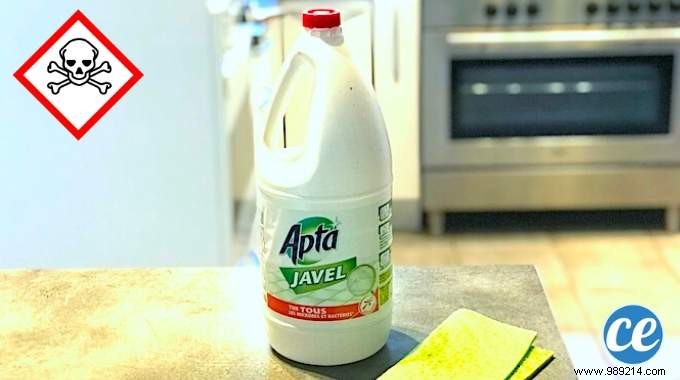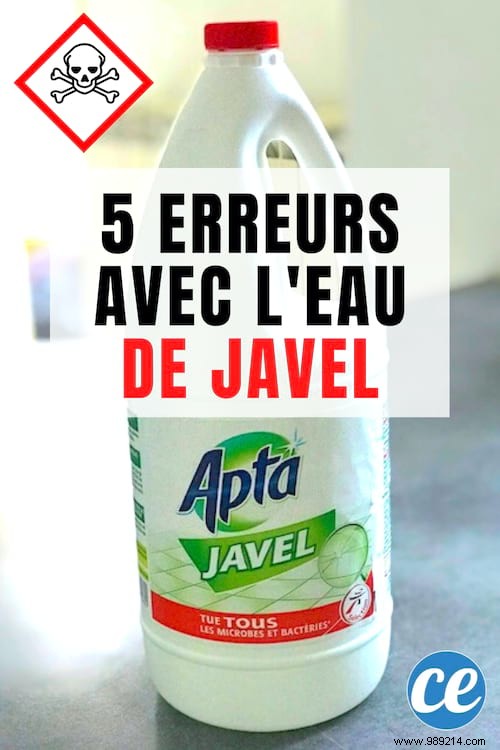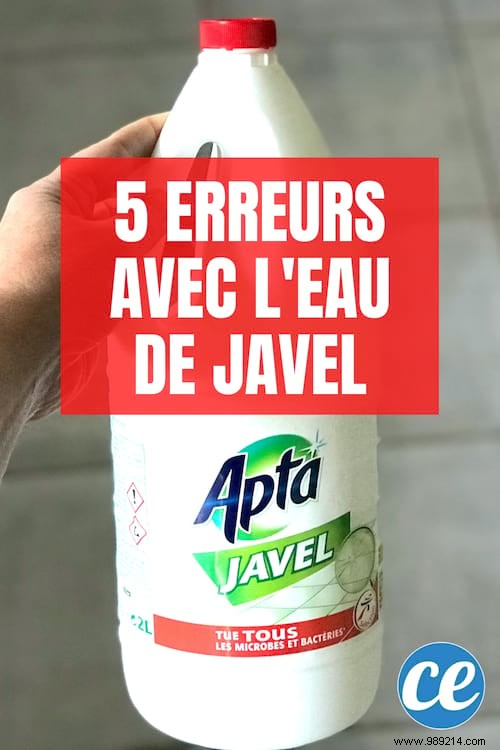
Because of the coronavirus, we spend our time cleaning and disinfecting in the House.
And for many, bleach is the solution to killing this virus. Why ? Because bleach is a virucide.
But beware, bleach is also a toxic product. And if used improperly, it can be dangerous to your health and that of your family.
Indeed, according to the ANSES health agency "poison control centers report numerous domestic accidents and poisoning due to bleach".
So here are 5 mistakes everyone makes with bleach . Watch:

Did you just go shopping and want to disinfect the products you bought?
ANSES recalls that under no circumstances should "clean food with bleach or any other cleaning or disinfectant product not intended to come into contact with foodstuffs s".
In summary, never put food in contact with bleach. So, no question of boiling eggs in bleach!
It is absolutely not recommended to clean food with bleach.
...Or to clean the packaging (like those of Easter chocolate eggs and bunnies) with bleach.
Why ? Because you risk serious food poisoning.
As this official site reminds us, it is not necessary to use bleach to clean packaging and it is dangerous to put it on food.
Do you want to disinfect your food products after shopping?
No need to use bleach, just leave them outside the home (or in the entrance) for 3 hours without touching them.
If products need to be refrigerated, immediately remove the packaging and throw it away (remember to recycle cardboard packaging!).
You can clean the products, but only with disinfectant wipes or soap and water.
Wash fruits and vegetables with clear water or possibly with water and baking soda, as explained here. Then wipe them off with a paper towel. You can also peel them immediately.
Always wash your hands before and after touching these products.
To discover: Coronavirus:15 Tips for Shopping WITHOUT Risk.
Do not bleach your hands to disinfect yourself!
As ANSES reminds us, "if you use bleach, use this product with caution , as it is strongly oxidizing and caustic to the skin, mucous membranes and materials."
Bleach is a corrosive product. It is very irritating to the skin. It is not without reason that you have to wear gloves to use it.
So do not use bleach to clean and disinfect your hands.
The best way to sanitize your hands is to wash your hands with soap and water, using this technique here.
As explained here, the action of soap and water is sufficient to render the virus inactive.
If you are not at home, use a hydroalcoholic gel to disinfect your hands, before you can clean them at home.
Do not dilute bleach in hot water. Why?
On the one hand, it makes it lose its effectiveness, but that's not all.
On the other hand, contact between hot water and bleach causes a chemical reaction.
This reaction generates chlorine derivatives that are toxic to the skin, eyes, bronchi and mucous membranes.
Instead of hot water, use cold water to dilute bleach and respect the following dosages:
- 0.25 liters of bleach for 1 liter of cold water.
ANSES recommends "strict compliance with the conditions of use of cleaning or disinfecting products (floors, surfaces in the home or workplace)."
Use bleach in exceptional cases, and the rest of the time use natural household products to clean your interior.
To discover: Coronavirus:6 Tips to Clean &Disinfect More Often at Home.
The Centers for Disease Control and Prevention (CDC) recommends cleaning surfaces with a product and then disinfecting them.
But be careful, do not do both at the same time!
Indeed, ANSES reminds that "cleaning or disinfectant products should not be mixed together, in particular bleach and descaler".
"We feel that people are anxious. They want to wage war on the virus at home and are pulling out their weapons, especially bleach and vinegar.
But this mixture releases a corrosive gas, which causes irritation of the eyes, the throat and can even sometimes lead to respiratory distress ,” explains Jérôme Langrand, head of the Paris poison control center, in the JDD.
In summary, bleach should not come into contact with an acid or a descaler:therefore, you should NEVER mix white vinegar and bleach.
This mixture releases a gas that is very toxic and dangerous for the respiratory tract:dichlor, which is very harmful to health.
It can burn the throat, eyes, lungs or cause asthma attacks or edema of the lungs.
First wash potentially contaminated surfaces with a natural cleaning product.
Then wipe down the surfaces. Then disinfect them with diluted bleach. Leave on for 5 minutes, rinse and wipe.
But as Dr. Jérôme Langrand of the Paris poison control center reminds us on BFMTV, in general, we must continue to do daily housework as we are used to doing.
Thus cleaning with white vinegar is sufficient in most cases, as this study reminds us.
It is better to reserve the use of bleach for certain special cases:when you come back from outside, when you live with a sick person or a potentially contaminated person or when you work with sick people.
To discover: Is White Vinegar Really Effective Against Coronavirus? Answer Here.
Since the start of the epidemic, veterinarians have observed poisoning and skin burns.
Why ? Because many people thought they were doing the right thing by using disinfectants like bleach on cats and dogs.
Veterinarians remind you that you should never wash your pets with corrosive products such as bleach.
The only time you can use bleach with an animal is to deep clean the cat litter box as explained in this tip.
For veterinarians, there is no need to clean dogs and cats when they return from a walk.
This is also true for any other pet:rabbit, bird, hamster...
ANSES considers that it is very unlikely to be contaminated by a pet.
But if you want to take all the precautions and wash your dog after his walk, soap and water are enough. Find out how here.
You can also just use baking soda, if your pet smells bad using this trick.

And you, in which cases do you use bleach? Share your experience with us in the comments. We can't wait to read you!